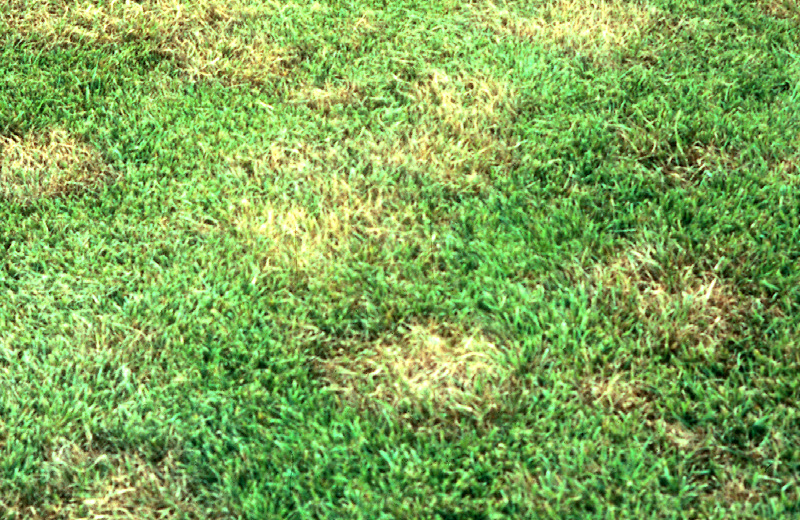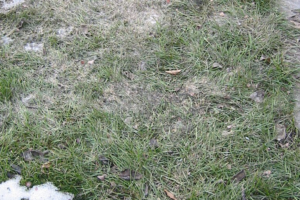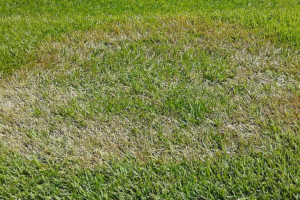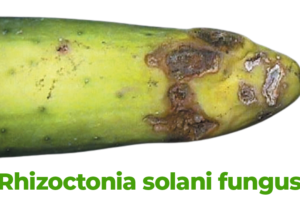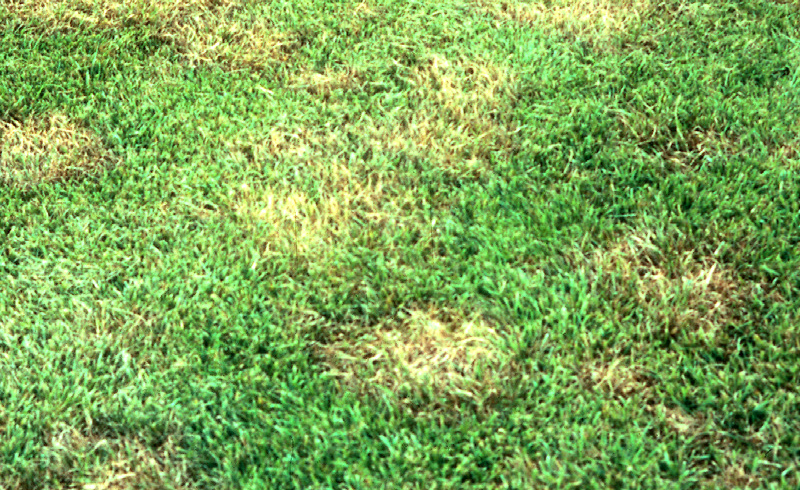
Introduction
Brief Overview of the Importance of Understanding Lawn Diseases in Warm Climates
Every homeowner dreams of a lush, green lawn that’s the envy of the neighborhood. However, if you live in a warm climate, you might have noticed that maintaining that dream lawn isn’t always a walk in the park. Warm climates bring with them a unique set of challenges, especially when it comes to lawn diseases. Just like humans can catch a cold or flu, grasses too can fall ill, and the results aren’t pretty. Brown spots, wilting blades, and unsightly patches can quickly turn your beautiful lawn into a gardener’s nightmare.
But why does this happen more in warm climates? The answer lies in the environment. Warmth and humidity, while great for a day at the beach, are also the perfect breeding grounds for many lawn diseases. These diseases can spread rapidly, affecting not just the appearance but also the health of your grass. And just like we need to understand common ailments to keep ourselves healthy, understanding these diseases is the first step to a healthier lawn.
The Impact of These Diseases on Lawn Health and Aesthetics
Imagine spending time, effort, and resources cultivating a beautiful lawn, only to see it wither away due to a disease you didn’t even know existed. It’s disheartening. These diseases don’t just affect the grass’s health, making it weak and more susceptible to other issues, but they also take away from the beauty of your outdoor space. A lawn riddled with disease can decrease your home’s curb appeal, making it less inviting to guests or potential buyers if you want to sell.
Moreover, a sick lawn can also affect the surrounding environment. Healthy grass is a natural filter, capturing dust, smoke particles, and other pollutants, providing cleaner air. It also prevents soil erosion and reduces runoff, protecting our waterways. So, a diseased lawn isn’t just an eyesore; it’s also less effective at doing these essential environmental jobs.
The following sections dive deep into the most common diseases plaguing warm-climate grasses. We’ll explore their causes, how to identify them, and most importantly, how to treat and prevent them. So, let’s arm ourselves with knowledge and give our lawns the best fighting chance!
Understanding Warm Climate Grasses
What Constitutes Warm Climate Grasses?
Warm climate grasses, often called warm-season grasses, thrive in regions with hot summers and mild winters. These grasses have adapted to flourish under the scorching sun, and they typically grow most vigorously during the late spring to early fall when temperatures are at their peak. Unlike their cool-season counterparts, which peak in growth during the cooler months, warm-season grasses have a unique ability to resist drought and heat. This is because they have deep root systems that can access moisture far beneath the soil surface, allowing them to stay green even in the harshest of summers.
However, it’s not just about the heat. Warm-season grasses also prefer longer daylight hours, which is why they grow most actively in the height of summer. These grasses include popular varieties like Bermuda, Zoysia, and St. Augustine. Each has its characteristics, making them suitable for different landscapes and purposes. For instance, while Bermuda might be perfect for a sports field due to its hard-wearing nature, St. Augustine might be chosen for its lush, carpet-like appearance in home lawns.
Challenges Faced by Warm Climate Grasses
While warm-season grasses are champions of the heat, they aren’t without challenges. The factors that warm these regions, such as high humidity and intense sunlight, can also create a breeding ground for various lawn diseases. Fungi thrive in warm, moist conditions, and a lawn watered in the evening (which remains damp throughout the night) can become a haven for fungal growth.
Additionally, these grasses can become stressed if exposed to prolonged periods of extreme heat without adequate water. Stressed grass is more susceptible to diseases and pests. It’s like how we’re more likely to fall ill when overworked or stressed. Pests, too, find these conditions favorable. Insects like chinch bugs or armyworms can wreak havoc on a warm-season lawn, further compounding these grasses’ challenges.
Understanding these challenges is the first step in addressing them. Homeowners can ensure their lawns remain healthy, vibrant, and disease-free by knowing what to look out for and how to care for warm-season grasses properly.
Brown Patch
Overview and Symptoms
Brown Patch, or Rhizoctonia solani, is a common fungal disease affecting many warm-season grasses. As the name suggests, it manifests as large, irregularly shaped brown patches on the lawn. These patches can range from a few inches to several feet in diameter. At first glance, it might seem like the grass is just thirsty, but you’ll notice a distinct difference upon closer inspection. These patches’ outer edges often appear dark and water-soaked, especially during the morning dew.
Within these brown patches, the grass blades can show signs of rotting at the base, near the soil. This rotting gives the grass a “melted” appearance, as if flattened. The disease doesn’t just stop at the blades; it can also affect the roots, making the grass easy to pull out. It’s a disheartening sight for any homeowner, especially when the rest of the lawn seems perfectly healthy.
Causes and Conditions
Brown Patch thrives in warm, humid conditions. This is why it’s particularly prevalent in hot summers and high-humidity areas. The fungus that causes Brown Patch loves moisture, so lawns watered in the evening and damp throughout the night are especially at risk. The disease spreads rapidly when nighttime temperatures stay above 68°F (20°C), and the lawn remains wet for extended periods.
Another contributing factor is excessive nitrogen. Lawns over-fertilized with nitrogen-rich fertilizers can become more susceptible to Brown Patch. The rapid, lush growth fueled by excess nitrogen creates an ideal environment for the fungus to thrive. It’s like feeding the enemy, where the very thing that makes your lawn green and lush also makes it vulnerable.
Treatment and Prevention
The good news is that Brown Patch can be treated and, more importantly, prevented. For starters, adjusting watering practices can make a world of difference. Watering the lawn in the early morning is best, allowing the grass to dry out during the day. This reduces the time the grass remains damp, depriving the fungus of the moisture it craves.
Fungicides can also be effective in treating Brown Patch. However, they should be used as a last resort and always according to the manufacturer’s instructions. Overusing fungicides can lead to other lawn problems and harm beneficial soil organisms.
Prevention is always better than cure. Regular lawn maintenance, like aerating the soil and ensuring proper drainage, can keep Brown Patch at bay. Also, being mindful of fertilization practices, especially regarding nitrogen content, can reduce the risk of an outbreak. With a bit of care and attention, you can ensure your lawn remains a lush, green oasis, free from the blight of Brown Patch.
Take-All Root Rot
Identifying the Disease
Take-All Root Rot, caused by the fungus Gaeumannomyces graminis, is a menacing disease that primarily targets the roots of grasses, making it a bit more insidious than diseases that only affect the blades. At first, the symptoms might seem benign. You might notice yellowing patches of grass that slowly turn brown. These patches can be small, but they often merge to form larger areas of dead grass. Unlike other diseases where the damage is primarily superficial, Take-All Root Rot weakens the grass from below, making it harder to detect in its early stages.
When you tug at the affected grass, it emerges quickly, revealing rotted roots. A closer inspection might show dark, shortened roots instead of the healthy white or light tan roots you’d expect. This is a clear sign that the grass isn’t just suffering from drought or lack of nutrients; it’s under attack from a disease damaging its foundation.
Understanding the Causes
Warm, wet conditions are a breeding ground for the fungus responsible for Take-All Root Rot. The disease is especially prevalent in areas with sandy soils and high humidity. Overwatering, or frequent light watering that keeps the soil constantly damp, can exacerbate the problem. The fungus thrives in this moist environment, spreading quickly and attacking the grassroots.
Another factor contributing to this disease’s spread is soil pH. Alkaline soils, or soils with a high pH, can make grass susceptible to Take-All Root Rot. The fungus prefers these conditions, and the grass’s natural defenses might be weakened in an alkaline environment.
Combatting and Preventing Take-All Root Rot
Once identified, acting quickly to combat Take-All Root Rot is crucial. Fungicides can be effective but must be applied correctly and at the right time. It’s often recommended to apply them during the cooler months when the grass is less active, as this can help prevent the disease from taking hold when the warmer, more humid months arrive.
Cultural practices can also play a significant role in preventing this disease. Proper watering techniques, such as deep and infrequent watering, can help reduce the risk. This allows the soil to dry out between watering sessions, making it less hospitable to the fungus. Adjusting the soil pH to slightly acidic can also deter the disease. This can be achieved by adding sulfur-based products to the soil.
Regular lawn maintenance, like dethatching and aerating, can improve soil health and drainage, reducing the risk of Take-All Root Rot. By understanding the causes and conditions that favor this disease, homeowners can proactively protect their lawns and ensure they remain healthy and vibrant throughout the year.
Dollar Spot
Spotting the Signs
Dollar Spot is a fungal disease that gets its name from the silver dollar-sized tan or straw-colored spots it produces on grass blades. At first glance, these spots might seem small and harmless, but they can quickly merge and expand, creating more extensive patches of damaged grass. The affected grass blades often exhibit a bleached appearance with reddish-brown borders. If you’re out early in the morning, you might notice a faint cobweb-like growth on the dew-covered spots: the fungus.
While the spots are the most visible sign of the disease, a closer inspection can reveal more. The tips and middle of the grass blades might appear scorched or burnt, while the base remains green. This pattern is a telltale sign of Dollar Spot, distinguishing it from other lawn diseases that might cause similar discoloration.
Conditions that Favor Dollar Spot
Dollar Spot thrives in conditions of high humidity and moderate temperatures. It’s especially prevalent during the late spring and early summer when nights are cool and dew forms on the grass. This moisture and the rising sun’s warmth create the perfect environment for the fungus to grow and spread. Lawns that are under-fertilized or have low nitrogen levels are particularly susceptible to Dollar Spot. This is because nitrogen is essential for grass health, and a deficiency can weaken the grass, making it more vulnerable to diseases.
Poor water management is another factor that can contribute to the spread of Dollar Spot. Overwatering, or watering late in the evening, can leave the grass damp overnight, providing the fungus with the moisture it needs to thrive. Conversely, drought-stressed lawns can also be susceptible, as the weakened grass can less fend off the disease.
Managing and Preventing Dollar Spot
The first step in managing Dollar Spot is ensuring your lawn receives the right amount of nutrients. Regular fertilization, especially with a balanced fertilizer that provides adequate nitrogen, can boost the grass’s natural defenses against the disease. It’s also essential to water the lawn correctly. Deep, infrequent watering in the early morning is ideal, as it allows the grass to dry out during the day, reducing the risk of fungal growth.
Fungicides can be an effective treatment for lawns already affected by Dollar Spot. However, they should be used judiciously and always according to the manufacturer’s instructions. Over-reliance on fungicides can lead to resistance, making the disease harder to control in the future.
Regular mowing can also help manage Dollar Spot. Removing the affected grass blades can reduce the fungus and prevent it from spreading. Ensure your mower blades are sharp, as ragged cuts can stress the grass and make it more susceptible to diseases. With a combination of proper lawn care practices and timely interventions, Dollar Spot can be kept at bay, ensuring your lawn remains a lush, green haven.
Pythium Blight
Recognizing the Symptoms
Pythium Blight, often referred to as “grease spot” or “cottony blight,” is a particularly aggressive lawn disease that can cause severe damage in a short amount of time. The initial signs of this disease are small, dark, water-soaked spots on the lawn, often appearing overnight. As the disease progresses, these spots can expand rapidly, merging into larger, irregularly shaped patches. One of the distinguishing features of Pythium Blight is the presence of a white, cottony mycelium (a type of fungus) that can be seen on the grass, especially during humid mornings.
Another characteristic symptom is the “greasy” appearance of the affected areas. The grass blades look water-soaked and slimy, sticking together and forming a matted layer. This is especially noticeable when you walk over the affected areas, as the grass will feel slippery underfoot. If left untreated, the grass in these patches can die off, leaving unsightly bald spots in the lawn.
Factors Contributing to Pythium Blight
Warm, humid conditions are the primary culprits behind the spread of Pythium Blight. The disease thrives when nighttime temperatures are above 68°F (20°C) and there’s a high level of humidity or moisture on the grass. This is why the disease is often seen after heavy rainfall or prolonged periods of high humidity. Lawns watered late evening, leaving them wet overnight, are particularly risky.
Other factors that can contribute to the spread of Pythium Blight include poor soil drainage and excessive thatch. Both conditions can trap moisture near the grass’s roots, creating an ideal environment for the disease. Additionally, due to nutrient deficiencies or insect damage, stressed lawns can be more susceptible to Pythium Blight.
Controlling and Preventing Pythium Blight
The rapid spread of Pythium Blight means that quick action is essential to control and prevent further damage. Fungicides designed to combat Pythium can be effective, but they must be applied at the first sign of the disease. Following the manufacturer’s instructions closely is crucial, as the incorrect application can exacerbate the problem.
Cultural practices play a significant role in preventing Pythium Blight. Improving soil drainage by aerating the lawn or adding organic matter can reduce the disease risk. It’s also essential to adjust watering practices. Watering early in the morning, allowing the grass to dry out during the day, can prevent the prolonged moisture that Pythium thrives on.
Regular lawn maintenance, like dethatching and proper mowing, can also help keep Pythium Blight at bay. Ensuring your lawn is healthy and robust can boost its natural defenses against diseases and remain a lush, green oasis for years.
General Prevention Tips for Warm Climate Grass Diseases
Proper Watering Techniques
Watering might seem straightforward, but how you water can make a significant difference when it comes to preventing lawn diseases. For warm climate grasses, it’s essential to water deeply but infrequently. This method encourages the grass roots to grow deeper into the soil, making them more resilient to drought and less susceptible to surface-level fungal diseases. When you water, aim to moisten the soil to a depth of about 6 inches.
Additionally, the timing of watering is crucial. It’s best to water your lawn early in the morning. This allows the grass blades to dry out during the day, reducing the time they spend wet and, consequently, the risk of fungal diseases. Evening watering can leave the grass damp overnight, creating a perfect environment for fungi to thrive. Adjusting your watering habits can significantly reduce the risk of many common lawn diseases.
Regular Lawn Maintenance
A well-maintained lawn is often a disease-resistant lawn. Regular mowing, for instance, can help prevent the buildup of thatch – a layer of dead grass and roots that can accumulate on the soil’s surface. Thatch can trap moisture, again creating an environment conducive to fungal growth. When mowing, it’s essential to ensure your mower blades are sharp. Dull blades can tear the grass, creating openings for pathogens to enter.
Aeration is another crucial aspect of lawn maintenance. Over time, the soil can become compacted, especially in high-traffic areas. Compacted soil restricts the flow of water, air, and nutrients to the grassroots, weakening the lawn and making it more susceptible to diseases. You can alleviate soil compaction by aerating your lawn once or twice a year, promoting healthier grass growth.
Choosing Disease-Resistant Varieties
If you’re establishing a new lawn or overseeding an existing one, consider opting for disease-resistant grass varieties. Many modern grass cultivars have been bred specifically to resist certain common diseases. While no grass is entirely disease-proof, these resistant varieties can significantly reduce your lawn’s risk of disease outbreaks.
It’s also essential to choose a grass type well-suited to your specific region and local conditions. Grasses adapted to your area will naturally be more resilient and better equipped to fend off diseases. Local nurseries or agricultural extension offices can recommend the best grass types for your region.
Monitoring and Early Intervention
Regularly inspecting your lawn can help you spot the early signs of disease before they become severe. Look out for any changes in color, texture, or growth patterns. If you notice any areas of concern, it’s essential to act quickly. Early intervention can often stop a disease in its tracks, preventing it from spreading and causing further damage.
In some cases, simple cultural practices, like adjusting your watering schedule or aerating the soil, can be enough to combat a budding disease. In more severe cases, you should consider targeted treatments like fungicides. However, always use such treatments judiciously and according to the manufacturer’s instructions. Over-reliance on chemical treatments can lead to other problems, like fungal resistance or harm to beneficial organisms in the soil.
Conclusion
The Importance of Vigilance and Proactive Care
Warm climate grasses, with their lush green appearance and resilience to heat, are a popular choice for many homeowners. However, like all plants, they are not immune to diseases. The key to maintaining a healthy, vibrant lawn in warm climates lies in vigilance and proactive care. By understanding the common diseases that can affect these grasses and the conditions that promote them, homeowners can take steps to prevent outbreaks and ensure their lawns remain a source of pride and enjoyment.
It’s also worth noting that while diseases can be a concern, they are just one of many challenges a lawn might face. Pests, drought, and physical damage can also take a toll. However, the principles of good lawn care – proper watering, regular maintenance, and early intervention – apply across the board. By adopting a holistic approach to lawn care, focusing not just on disease prevention but on promoting overall grass health, homeowners can create a robust foundation that will serve them well in the face of any challenge.
The Role of Continuous Learning and Adaptation
Lawn care is as much an art as it is a science. As with any art, there’s always something new to learn, whether it’s a novel disease treatment method, a newly available grass cultivar, or an innovative maintenance technique. Continuous learning and adaptation are crucial for homeowners dedicated to achieving the perfect lawn.
The world of horticulture is continually evolving, with researchers and practitioners always looking for better ways to grow and care for plants. By staying informed and being willing to adapt, homeowners can ensure they’re always at the cutting edge of lawn care, ready to tackle any challenge that comes their way. Ultimately, the reward – a beautiful, healthy lawn that provides a space for relaxation, play, and connection with nature – is well worth the effort.
Frequently Asked Questions
What are the common diseases that affect warm climate grasses?
Warm climate grasses can be affected by diseases like Brown Patch, Take-All Root Rot, Dollar Spot, Pythium Blight, and Fairy Ring.
How can I prevent fungal growth in my lawn?
Proper watering techniques, like watering deeply but infrequently and watering early in the morning, can help reduce the risk of fungal growth.
Why is regular lawn maintenance important?
Regular maintenance, like mowing and aeration, promotes healthy grass growth, prevents thatch buildup, and reduces the risk of diseases.
Are there grass varieties resistant to diseases?
Yes, many modern grass cultivars have been bred to resist certain common diseases. It’s beneficial to opt for these when establishing a lawn.
How does soil compaction affect my lawn’s health?
Compacted soil restricts the flow of water, air, and nutrients to grass roots, weakening the lawn and making it more susceptible to diseases.
Why should I water my lawn early in the morning?
Watering early in the morning allows grass blades to dry out during the day, reducing the time they spend wet and the risk of fungal diseases.
Can chemical treatments harm my lawn?
Over-reliance on chemical treatments, like fungicides, can lead to fungal resistance or harm beneficial organisms in the soil. Use judiciously.
What’s the best approach to achieve a healthy lawn in warm climates?
A holistic approach focusing on proper watering, regular maintenance, early intervention, and continuous learning is key to a healthy lawn.

Bob Green, a passionate lawn care enthusiast with over two decades of landscaping experience, is this website’s proud owner. His vast knowledge of horticulture and dedication to helping homeowners maintain beautiful lawns are reflected in the valuable content he shares on his platform. John has always been interested in Agrostology.

